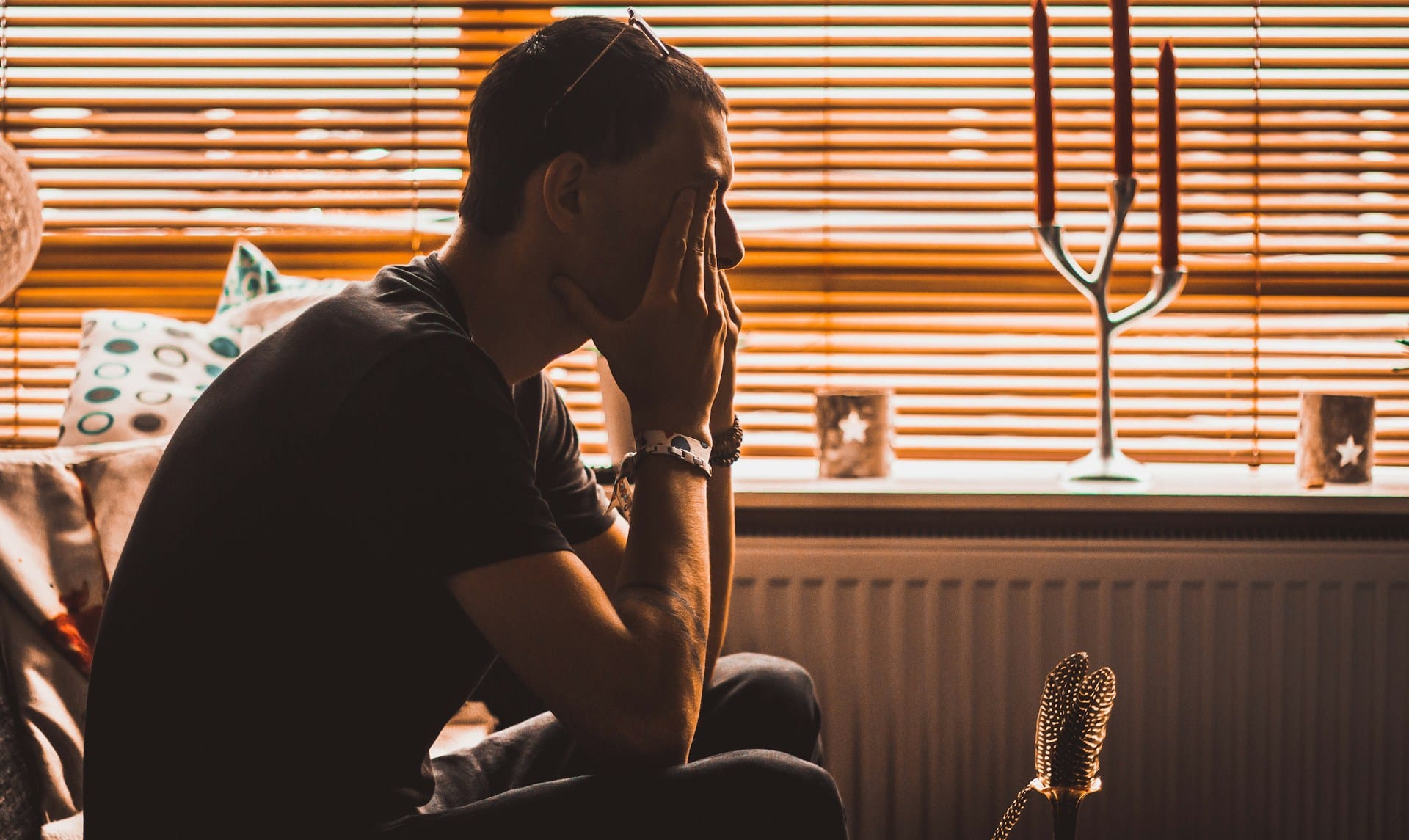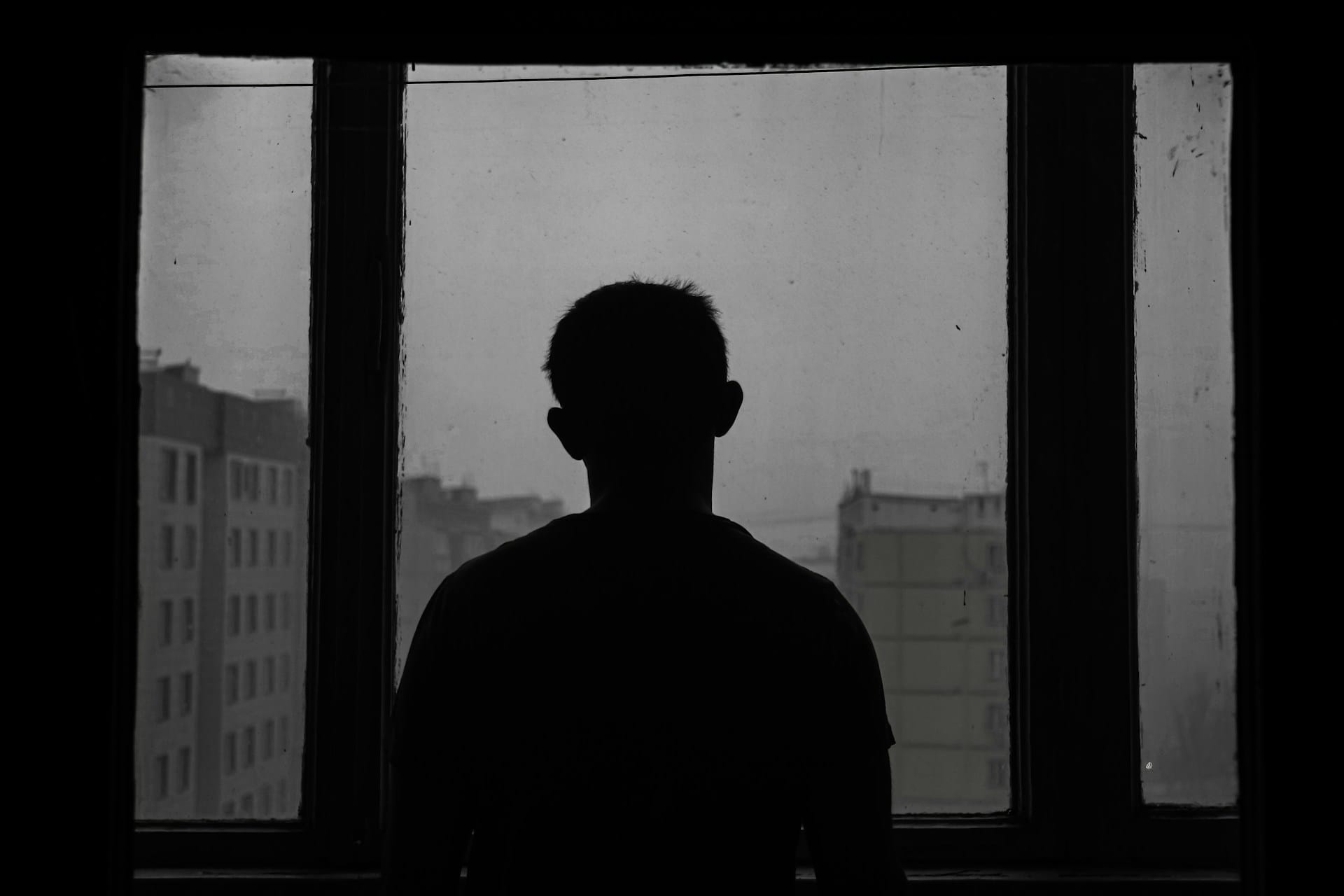A Better Version of Me
Diagnosed with major depressive disorder, he began a journey to find the right treatment. He opted to take a non-traditional route: ketamine-assisted therapy. Psychedelic experiences allowed him to view his life from a different lens.

Story
My first major depressive episode came in 2006. I didn’t know what was causing my precipitous loss of interest in activities, my low mood, or reduced functionality. The Internet told me I suffered from depression—thanks, Dr. Google! I considered seeking professional help, but I didn’t envision myself as someone who took medication. I also didn’t understand what psychotherapy was for, and I wasn’t aware that other options existed. I spent a year trying to think my way out of problems using a brain impaired by my illnesses, which led me nowhere, and my frustrations compounded. I grieved my losses until eventually, frustration and sadness became anger at how my seemingly good life had disintegrated.
 I’d heard that meditation can help develop some control over the mind. One day, while I was out walking, I randomly stepped into a bookstore and found a book on meditation. I liked that the book didn’t overpromise results and how it tied mindfulness practices to science. Discovering that book was a happy accident which fostered a sense of feeling invested in my own mental health care. I put in a lot of work, and during one practice, I experienced dissociation—an out-of-body experience, where I felt a connection with all things. From that day forward, I was able to observe my thoughts and feelings without getting swept away by them, and I became quite excited about this.
I’d heard that meditation can help develop some control over the mind. One day, while I was out walking, I randomly stepped into a bookstore and found a book on meditation. I liked that the book didn’t overpromise results and how it tied mindfulness practices to science. Discovering that book was a happy accident which fostered a sense of feeling invested in my own mental health care. I put in a lot of work, and during one practice, I experienced dissociation—an out-of-body experience, where I felt a connection with all things. From that day forward, I was able to observe my thoughts and feelings without getting swept away by them, and I became quite excited about this.
With meditation as a sort of centerpiece, I began adding more pieces that fueled my effort to construct a new life that seemed worth living. I made thoughtful but not extreme changes to my diet, which helped. It took a while to adjust to these changes, but once they became routine, it felt like I was once again moving with the flow of the universe. As depression symptoms lifted, I was able to engage in more areas of life.
It felt like my insides had been scooped out, and I wondered if somehow I’d turned into a walking corpse.
However, in 2013, I relapsed into another major depressive episode, which shattered the illusion of depression as merely a phase I’d outlasted. I felt angry, dissatisfied, and disappointed in myself, and the manner in which I externalized my discontent contributed to being fired from my job and ending my romantic relationship.
After a year of isolation and struggling to complete basic activities of daily living, I began experiencing anhedonia, the inability to feel joy or pleasure. It felt like my insides had been scooped out, and I wondered if somehow I’d turned into a walking corpse. Seeking evidence that I was capable of feeling, I considered ways of hurting myself. That was a frightening time, but it helped me overcome my fear and resistance to turning to the medical community for help.
My psychiatrist diagnosed me with major depressive disorder (MDD) and generalized anxiety disorder (GAD). The medical plan consisted of taking prescription drugs to reduce my symptoms, attending individual psychotherapy, and attending psychoeducation classes. Cognitive behavioral therapy (CBT) and acceptance and commitment therapy (ACT) taught me skills for challenging everyday negative thinking and led me to rediscover my core values and how to connect those to my behaviors.
 I applied myself but struggled with cognitive therapy because the organ necessary for cognition was the same one impaired by the symptoms. Also, the medications weren’t working. I complained to my psychiatrist, and she changed my medications. That began a years-long cycle of cross-tapering, trying different classes of antidepressants, and adding adjunct drugs. While I got no relief effects from any of them, I did experience the side effects, which only contributed to my frustration, impatience, and hopelessness. My non-responsiveness to traditional psychopharmaceuticals earned me a third diagnosis— treatment-resistant depression (TRD).
I applied myself but struggled with cognitive therapy because the organ necessary for cognition was the same one impaired by the symptoms. Also, the medications weren’t working. I complained to my psychiatrist, and she changed my medications. That began a years-long cycle of cross-tapering, trying different classes of antidepressants, and adding adjunct drugs. While I got no relief effects from any of them, I did experience the side effects, which only contributed to my frustration, impatience, and hopelessness. My non-responsiveness to traditional psychopharmaceuticals earned me a third diagnosis— treatment-resistant depression (TRD).
During an office visit in early 2017, my therapist asked me if I’d be willing to consider non-traditional treatments for my MDD symptoms and told me of the Ketamine for Depression experimental program being conducted by my managed care HMO. I was skeptical. I had a rather strong feeling that I was considered a “hopeless case” and a belief that perhaps my only use was as a guinea pig for experimental drugs. I unleashed these feelings on my unsuspecting therapist. I have suicidal ideation, anhedonia, anxiety attacks…and you propose shooting me up with a dissociative anesthetic party drug?!
One can cognitively accept the statement “I am not my illness,” but it’s very different for a person with chronic depression to feel that this is true.
What I didn’t know is that as many as one-third of MDD patients are labeled “treatment-resistant” to psychopharmaceuticals. In order to make sense of the failure of conventional drug treatments, I reasoned that my problems were either fake or my fault, which ironically is a symptom of depression. I also believed that my life wasn’t defined by taking many risks, so it would require another six months of unbearable MDD symptoms before I asked my therapist if there was room for me in the “guinea pig lab.” I’m fortunate that there was, as it likely saved my life.

Before I began ketamine-assisted therapy, the doctor who oversaw treatment asked if I’d ever experimented with psychedelic drugs. I told him I had and to my amazement and bemusement, he validated me by saying, “Your lack of psychedelic naïvete makes you a strong candidate for this kind of treatment.” My initial experience during ketamine infusion felt overwhelming, yet that was acceptable given that the symptoms of my illness were, too.
One can cognitively accept the statement “I am not my illness,” but it’s very different for a person with chronic depression to feel that this is true. During my second ketamine treatment, I had a dissociative experience in which I could perceive a “me” that was separate from my depression and was able to observe depression, much like I’d observed my feelings and thoughts during meditation. I also had a deeply moving vision of myself in isolation, disconnected from friends and family. This brought about the realization of how they were missing me being in their lives, and perhaps I wasn’t the unwanted burden I believed myself to be.
Experiencing setbacks and relapses are segments of my mental health journey that serve as learning opportunities and reminders of how I live with significant health conditions.
In subsequent ketamine infusions, I discovered that using music and mindfulness techniques together were helpful and also this increased my engagement with the treatment. I also began psychoeducation classes in dialectical behavior therapy (DBT). DBT presented a concept that was new to me: how two seemingly opposite beliefs or feelings can both be true at the same time, and I can work to maintain a balance between them. “Both/and” rather than “either/or” is fundamental to dialectical thinking, and ketamine treatments helped imprint it in my brain.
 Experiencing setbacks and relapses are segments of my mental health journey that serve as learning opportunities and reminders of how I live with significant health conditions. It’s a journey of self-exploration. My dissociative experiences during ketamine or meditation helped me rediscover that the inner world of me is just as fascinating and worth exploring as the world around me. Whatever path one chooses to start their journey toward mental wellness, I think it requires a sense of ownership, self-direction, curiosity, and engagement. Along the way there will be resistance, and that’s normal, so we want to favor willingness over willfulness. In my situation, that meant a willingness to embrace forms of help I didn’t immediately recognize as helpful.
Experiencing setbacks and relapses are segments of my mental health journey that serve as learning opportunities and reminders of how I live with significant health conditions. It’s a journey of self-exploration. My dissociative experiences during ketamine or meditation helped me rediscover that the inner world of me is just as fascinating and worth exploring as the world around me. Whatever path one chooses to start their journey toward mental wellness, I think it requires a sense of ownership, self-direction, curiosity, and engagement. Along the way there will be resistance, and that’s normal, so we want to favor willingness over willfulness. In my situation, that meant a willingness to embrace forms of help I didn’t immediately recognize as helpful.
In time, I began to realize how I loved talking about mental health and listening to stories about the struggle and success of people like myself.
Receiving psychedelic-assisted psychotherapy marked a significant advance for me toward a life worth living. However, ketamine could not tell me what to do about the wreckage left by years of depression. Sorting out financial difficulties, career questions, and how to find and sustain meaningful personal relationships are aspects of recovery that can’t come from a chemical compound. I needed mentoring and modeling for living with dual diagnoses, so in 2018, I joined the San Francisco Chapter of the Depression and Bipolar Support Alliance (DBSA) and eventually became a support group facilitator.
In time, I began to realize how I loved talking about mental health and listening to stories about the struggle and success of people like myself. With help from a career coach, I made a cautious move into the professional mental health realm by accepting a job as a peer counselor at the Mental Health Association of San Francisco’s Warm Line. In 2020, I was accepted into the University of San Francisco’s Masters in Counseling Psychology program.
Finding a synthesis between my identity as a mental health consumer/peer and my work as a mental health professional is challenging. The realization that mental health is both a passion and a value of mine helps me face the difficulties of beginning a new career as a helper and healer. I’m not going to tell you I’m certain I’ve found the ultimate direction and purpose for my life. I can say this feels in line with my core values, which makes it the “right kind” of life uncertainty. Taking risks is a normal and necessary function of living as well as an expression of our freedom and autonomy. The cost of avoiding uncertainty is I could not learn, grow, or prove to myself again and again that I’m far more resilient and competent than my illnesses have led me to believe.